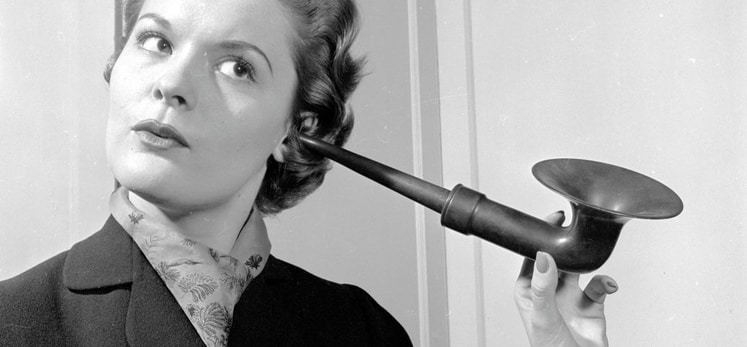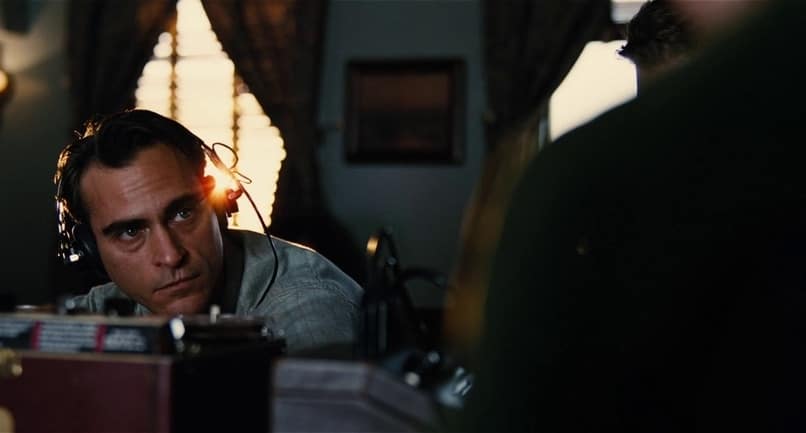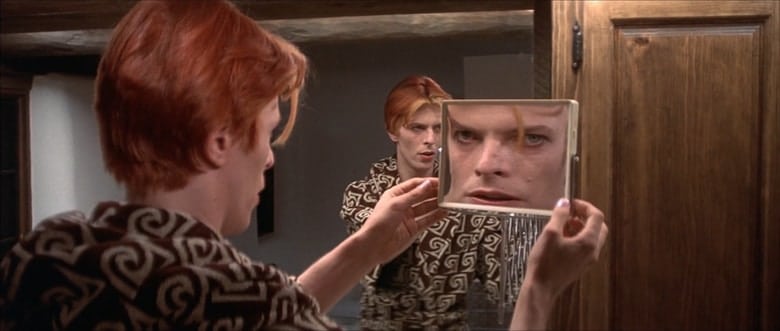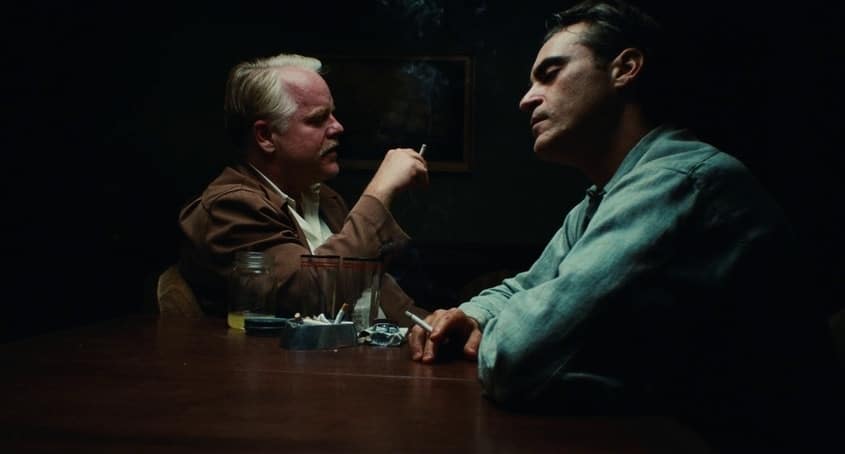One of the biggest humps to get over when writing for film or television is dialogue. Even if you have a perfect story, outline, and characters, bad dialogue can bring the whole operation down. 99% of the time, what you need is to have realistic dialogue.
Of course, not every project needs realistic dialogue all the time (see: The Grand Budapest Hotel). But unless your premise and tone align along wacky lines or you have a specific stylistic remit, it’s often best to stick close to real life with your characters’ words. Moreover, realistic dialogue can be a good guiding north star for writing, a way to ground the dialogue and focus it.
Table of Contents
- So What Constitutes “Realistic Dialogue”?
- How Do You Write Realistic Dialogue? 10 Steps
- 1. Stay True to Life
- 2. Establish Mannerisms
- 3. Know Your Characters Inside and Out
- 4. Become a Character Yourself
- 5. Inspect the Circumstances
- 6. Write Practice Scenes
- 7. Write Deleted Scenes
- 8. Embrace Silence
- 9. Embrace Change
- 10. Be Consistent
- In Conclusion
So What Constitutes “Realistic Dialogue”?
Take a moment to think back to some of the worst films you’ve ever seen. Are there lines that made you laugh out loud, not because they were comedic, but because they were laughably unrealistic?
Unrealistic dialogue breaks the viewer’s focus. Realistic dialogue, meanwhile, is almost unnoticeable; it draws the viewer further in, so they forget they’re watching a film.
In a sense, realistic dialogue is a misnomer, since all dialogue exists within a fictional setup. And oftentimes the more realistic the dialogue the less smooth and seamless it is. Dialogue in real life overlaps, trails off, stops and starts. This isn’t well-matched to the smooth flow of a movie or TV show. We want the dialogue in what we’re watching to flow and make us forget we’re indulging in fiction in the first place.

That all being said, dialogue that doesn’t feel natural sticks out like a sore thumb. So it’s a tricky balance, creating dialogue that sounds realistic but that isn’t so wedded to realism that it hinders the progression and digestion of what’s on-screen.
Realistic dialogue ultimately captures something true to life about dialogue between human beings. It may not be directly comparable to our conversations in day to day life. But it gets at the core of what it is to communicate. And it does so by using language and patterns of speech that we recognize.
So if it’s your goal, how do you make sure you’re achieving realistic dialogue? Let’s take a look….
How Do You Write Realistic Dialogue? 10 Steps
1. Stay True to Life
It isn’t as hard as it sounds. Think of the people you hear talk every day. Every one of your potential viewers spends their life in the real world. What’s natural to them is all around you. Whether it be your boss, your significant other, or someone you overheard on the bus: that’s your inspiration.
As elementary as it sounds, if you’re struggling with realistic dialogue, listen to real people before you turn to your favorite movie. You’re looking to achieve realistic dialogue, so keep in mind that letting reality inform the entire process is the first stepping stone.
Take to YouTube, or the streets, or a cafe, and just listen. Think about how people react verbally and why. Are there characters in your story you can apply your findings to? It might be the closest you’ll get to a science experiment as a screenwriter. And it’s worthwhile.
There’s a rhythm to how people talk in real life. It’s important to be attuned to this. If you spend too much time reading screenplays or watching films to study dialogue, you’ll forget that what you’re really trying to do is ape real life and not the movies.

2. Establish Mannerisms
A powerful way to bring realism to your dialogue is to develop your characters’ habits. Everybody has verbal tics and instinctive diction. For example, maybe when listening to somebody, you say “right” every now and then to stay engaged. Or in place of “nice”, you say “tight”, or “cool”.
If your character doesn’t have these types of mannerisms, there’s room to make their dialogue more realistic. Try to look at yourself, or ask someone you spend a lot of time with; what are specific words and phrases you say a lot, and when do they come out of your mouth?
Not only does this kind of detail really help with realistic dialogue, it’s also an opportunity to make your character more distinct. If they’re unsure of themselves, maybe they often restart their first sentence after a few words. Or they often say “power through” if they’re perseverant. These are small but effective details.
If you strike it right, your character will have more realistic dialogue, and be both more memorable and more relatable. You can apply the age-old screenwriting adage “show, don’t tell” in dialogue just as well as you can in action or description.
How does how your character talks reflect their individuality? The way we talk is intimately tied to our backstory, life experiences, attitudes and mood. This should be true of your characters too.
The Succession Uh-huh
A great example of this comes in Succession.
The phrase “uh-huh” permeates the series. It emanates from Logan Roy. But it ends up being a phrase that all in his circle use frequently.

- Its tone is dismissive. It ultimately always seems a way to placate whatever is being said and/or who is saying it. It’s an agreement with the bare minimum commitment.
- And it represents the level of detachment the characters have to their actions. Lying is second nature to these characters. And the “uh-huh” is a form of lying. It’s a way of tacitly agreeing to a situation without actually agreeing to it.
- The “uh-huh” often comes in situations we know the characters don’t actually feel comfortable in. This might be agreeing to something we know they don’t agree with. Or saying they’re going to do something when really we know they’re going to do the exact opposite.
It’s such a small phrase and mannerism that it’s easy to miss. But its deployment is highly purposeful and meaningful. And it’s a great example of how mannerisms in dialogue can be used to convey characterisation as well as themes.
3. Know Your Characters Inside and Out
The biggest handicap any writer can have to their ability to write realistic dialogue is a lack of preparation. Realistic dialogue doesn’t just mean dialogue that sounds like something you would hear in real life. It also has to sound like something your character would actually say.
Before writing, ask yourself in-depth questions about your characters.
- What’s their trauma?
- What are their triggers?
- Where are they comfortable or uncomfortable?
You must know your characters better than they know themselves. If somebody wrote you as a character, what wouldn’t you understand about yourself that they would?
Nobody speaks exactly the same. Your job is to figure out why your characters speak the way they do. Be your character’s psychiatrist. Unpack the subconscious thinking that makes your character nervously over-talk in certain situations, or clam up in others.
Often dialogue feels at its most realistic when it seems intrinsically and appropriately connected to the character speaking it.

4. Become a Character Yourself
You’ve probably heard the term “method acting”. Lots of professional actors use various “method” techniques so they can become one with the character they’re portraying, and put on a convincing performance. Writing a character is similar to acting out a character in a lot of ways. And so a form of “method writing” can be helpful to create realistic dialogue.
The easiest person to realistically write dialogue for is yourself. Actors will frequently take scenes they’re performing and relate them to their own experiences to understand the emotions. When writing realistic dialogue, you can use yourself in a similar way.
Rather than focusing on just your common ground with your character, take into account your differences, too. Think of how you acted or might act in a situation similar to the scene you’re writing. What about your character might cause them to act differently to you?
If you can create a baseline for human behavior using the one person you know best – yourself – all you need to do to get going is understand what makes you different from each character. Using the genuine behavior of a real person as a starting point is much more efficient than pulling realistic dialogue out of thin air.
If you can think of other people in your life who you know well enough, you can give it a shot using their behavior too. But keep in mind that predicting the behavior of real people is much more difficult than for a fictional character. That’s why this method doesn’t work 100% of the time; you might not actually know yourself as well as you think.

5. Inspect the Circumstances
Real people speak and act in different ways depending on their physical and mental circumstances. To get realistic dialogue you need to take every factor in a scene into account. This might be character mindset, mood, physical environment, or who they’re with.
To get maximum immersion for an audience, you want to build an experience in every scene. If the scene is from a certain character’s perspective, sink yourself into that perspective and build their point of view of the scenario. Set yourself up to successfully write realistic dialogue.
The most impactful factor is a character’s mental condition. If they’re upset, they might respond more impulsively, which could take precedent over other aspects of the situation. Sometimes strong emotions block people from thinking clearly and thus talking sense.
After that, look at the physical situation. Who is present? Who has power in the scene? If your character is one on one with a stronger personality, or someone they feel inferior to, their responses may be more subdued. If they’re with someone close to them, they’re more likely to be true to themselves in their words.

Next is the physical setting, which can change everything. If a character is in a familiar place, that’ll allow them to relax a bit, and their dialogue should reflect that. At the other extreme, if a character is in danger, that has the potential to completely change the way they’re acting and speaking.
You have to balance each of these factors off each other. Sometimes it can be hard to know which ones to value above others. This is another reason why it’s essential that you know your character like they’re your closest friend. When in doubt, go with the character’s gut or subconscious.
6. Write Practice Scenes
Building and familiarizing yourself with your character can often be a challenge. You can map out a character on paper as much as you want, but that doesn’t mean you’ll instinctively know how to write them once you begin your script. The quickest route to that is practice.
A practice scene can be anything that doesn’t directly narratively relate to your plot. The idea is to exercise your brain so it’s ready for the main event. If you write a scene for your script during practice, you’ll struggle to workshop it once you’ve gotten started, and it could bring down the scenes around it. Instead, try and divorce the characters from your actual plot for a while.
- It’s often best to write scenes that have never happened and will never happen to your character.
- You’re dropping them into a sandbox and simulating their actions and reactions.
For example, let’s say your protagonist‘s boss will unexpectedly ask them to fire someone in your story. Write a scene where they reject someone who spontaneously asked them on a date. You have the pressure and anxiety of surprise, and the action of rejection, but in different circumstances.
As you progress, look back at older scenes and edit them as you’ve grown into a stronger understanding of your characters. In other words, keep your brain limber when workshopping. Write a character’s daydreams as scenes if you think it will help you get inside their head.
If you make this a daily writing exercise for long enough, it won’t take that long to be in a great spot to write your characters with the most authentic, realistic dialogue possible. The more you nail down your characters’ voices and reactions before you start, the better and more complete that first draft will be.

7. Write Deleted Scenes
Often the scenes that get cut from a film in post-production are scenes that didn’t need to be included in the first place. If a scene doesn’t contribute to the narrative or to a character’s story-relevant development, it shouldn’t be in the final product. But that doesn’t mean it can’t be useful.
Every writer has scenes they wish they could write that just have no place in the script. That’s where another level of scene practice comes in. If you’re having writer’s block on a certain scene, write the unimportant scene that happened 20 minutes before.
Sitting and staring at Final Draft waiting for inspiration is a great way to get impatient and botch the scene. Keep the story and characters on your mind and write that fun scene you thought of that you can’t fit into the script. Then go back to the scene you were working on.
Realistic dialogue will be at its best if you feel like you’re writing a close friend. Doing this through “deleted scenes” keeps you warmed up on how your character is feeling and what they’re thinking in the unique circumstances of your plot.
Give yourself a change of scenery with a fun – but narrative adjacent/related – scene if you need a break from the tension of your plot. However, try and let it bleed into your character work and not your actual script.
8. Embrace Silence

One of the biggest mistakes screenwriters make is overusing dialogue. Aspiring writers watch Quentin Tarantino flicks or Aaron Sorkin shows and try to emulate their gloriously snappy and fun dialogue. In fact, sometimes what makes the most sense for a character is for them to shut up.
Do you ever find yourself hoping somebody would stop talking so much? Usually, it’s because what they’re saying is obnoxious, or because they talk and talk and never say anything of value. Script readers feel that way about excess dialogue. It tends to be unrealistic, and often a slog to get through.
What too many writers fail to consider is the power of saying very little, or nothing at all. The most realistic dialogue for certain scenes can be no dialogue. For some characters, a lack of speech is much more realistic overall.
Think back to inspecting circumstances as well. If a situation strikes fear into your character, will they have the resolve to utter a word? If they do, it’s probably the bare minimum they need to say to escape the situation. When writing realistic dialogue, self-control is everything.
A huge part of writing realistic dialogue is knowing when to replace dialogue entirely. In most screenplays, somewhere there’s a line or conversation begging to be substituted with a wordless, grounded moment. There are so many quiet moments in life, but they’re often marred by dialogue on the big screen.
9. Embrace Change
The trickiest part of writing realistic dialogue and behavior can be keeping up with changes in your characters. Especially in stories that take place over a longer period of time, your characters could undergo changes that might alter the way they speak.
This is another spot where you can look inward. Maybe as a teenager you used words that you no longer think are mature, or even acceptable to say. Maybe you react calmer under stress than you once did. With development comes noticeable changes in behavior.

If your characters are developing, as any character in the vast majority of well-written stories should, you need to be conscious of how realistic dialogue for those characters may shift. In this case, it’s as important for verisimilitude as it is for the believability of your character development.
If you still regularly spoke just like you did at age 15, people would call you immature. If a character speaks in the third act just like they did in the first scene, people will question whether they’ve changed at all.
- Isolate the change. What are the attitudes, values, and traits that have developed?
- Look back at your earlier scenes. Find dialogue that would be completely different if your character is not the same person then that they are now. Why would it be different? And how?
Writing the later scenes of your script is also a good time to get back to some practice scenes. If their characteristics have developed, you might need to re-learn these new instances of your characters to be able to write their dialogue comfortably.
10. Be Consistent
Though you should have all the tools to do this by now, this can never be overstated. Consistency is key. Oftentimes when writing dialogue, you have to juggle realism, furthering the plot, and subtext all at once. Though these are all important, you can’t sacrifice character consistency.
It’s tempting at times to let go of realistic dialogue for a big plot reveal, or to squeeze in a thematically poetic line. You just can’t sacrifice it. Your characters’ actions and voices need to stay consistent with the person they are at each point of the story, or you’re setting them up to contradict themselves.
The fastest track to losing your audience is to lead them into doubt. If your protagonist argues about a belief to highlight your themes, and 20 pages later says they don’t like to push their beliefs onto others, eyebrows will raise. That could just be a character flaw, but make sure it’s truly a part of the character, and not just an acceptable loss to make your message more succinct.
- If you’re unsure whether you’re succeeding at staying consistent with realistic dialogue, read it aloud.
- Finding a few friends for a casual table read is a fantastic way to check if your dialogue is working.
- Your internal voice often sounds just like you want it to. So it’s good to hear your lines spoken into the world to check if this matches.
Ultimately, not every script is aiming for the most realistic dialogue in the world. But even if your plan isn’t for your dialogue to be completely true to life, consistency of character still matters just as much. If your dialogue is deliberately silly, for example, make sure this tone is matched (if not always upheld) throughout the script.

In Conclusion
Writing realistic dialogue may not be your aim. And by no means does it have to be. Look at the work of some of the most lauded screenwriters of all time; Aaron Sorkin, Quentin Tarantino, Wes Anderson, Amy Sherman-Palladino. Their dialogue is far from realistic. It’s stylized, heightened, theatrical and often odd. And it’s great for being so.
However, what their dialogue does still have is a truth to the story it’s telling. It fits within the world they’re creating. And it, therefore, feels naturalistic and believable.
Achieving highly stylized, distinctive dialogue isn’t easy. But if you’re seeking to do so, following the steps to achieving realistic dialogue can, paradoxically, be a way to go.
After all, writing realistic dialogue is most of all about writing dialogue that is true to your characters and story. It’s about attuning yourself to the world and people around you and creating something in your screenplay that reaches a truth about being human.
– What did you think of this article? Share It , Like It , give it a rating, and let us know your
thoughts in the comments box further down…
–Struggling with a script or book? Story analysis is what we do, all day, every day…
check out our range of script coverage services for writers & filmmakers.
This article was written by Andy Fialko and edited by IS Staff.
Get *ALL* our FREE Resources
Tackle the trickiest areas of screenwriting with our exclusive eBooks. Get all our FREE resources when you join 60,000 filmmakers on our mailing list!


Insightful.